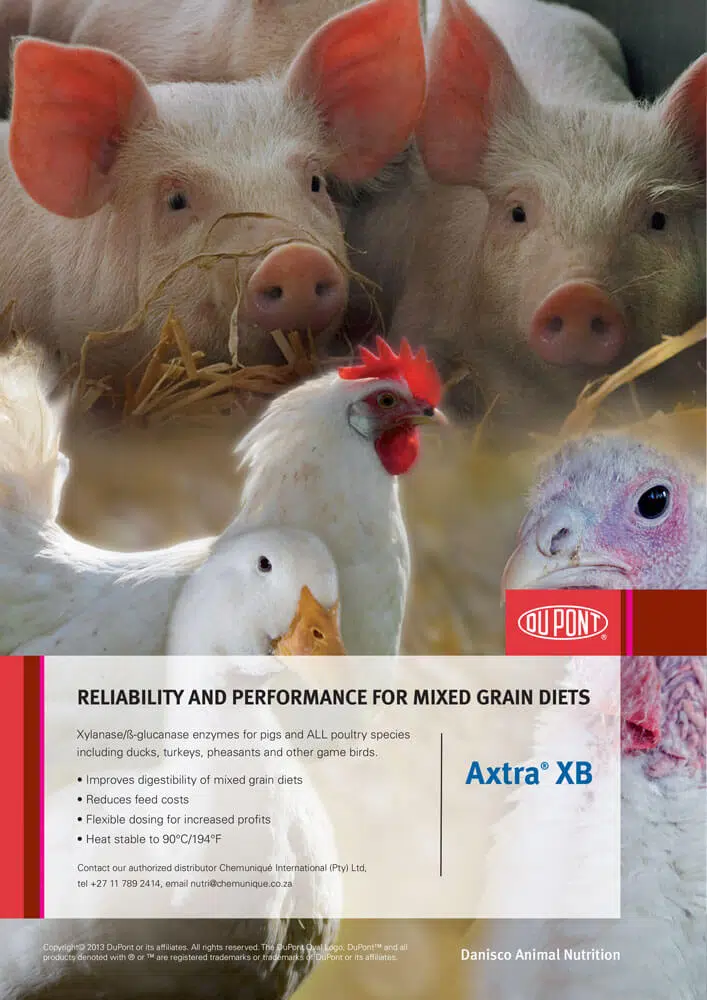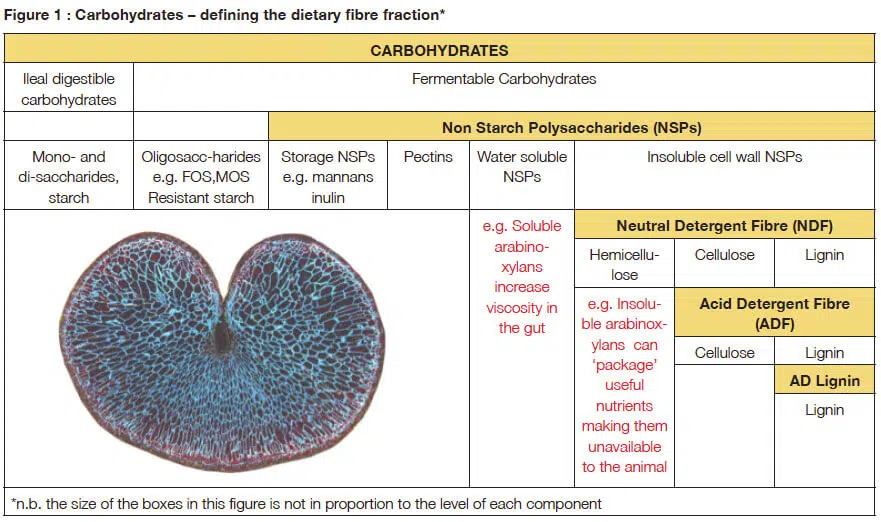Particularly at times of high feed prices the focus of attention for nutritionists is on maximising nutrient availability in pig feeds. In South Africa the predominant grain is maize, with specific regional interests in the use of wheat and barley, dependent on their relative price and availability. The other primary constituents are vegetable proteins (e.g. soybean, rapeseed and sunflower meals) and grain by-products (e.g. wheat middlings/bran). In general terms the ability of pigs to digest more fibrous diets, without compromising productive performance, is fundamental to improving our opportunities to reduce cost per kg gain in the current economic environment.
‘The dietary fibre challenge’
The challenging effects of dietary fibre in pigs include factors such as satiety; gut motility; nutrient digestion and absorption; and changes in the gut microflora as a consequence of fibre addition. Improving the feeding value of fibre-rich raw materials is consequently about negating the anti-nutrient effects of dietary fibre to ensure that animal performance is maintained or improved, but at lower cost. Dietary fibre is nowadays more precisely defined as ‘non starch polysaccharides (NSP) + lignin’ (Figure 1) and understanding the fibre fraction of individual raw materials, and its inherent variability, is very important when designing diets to maximise pig performance. The term “crude fibre” (still present on many feed labels around the world) is predominantly only a measure of cellulose plus lignin and consequently itself is a very crude, inaccurate measure of fibre content and its likely effects on animal performance. Other factors in dietary fibre e.g. its hemicellulose content (Figure 1) and,more specifically, its NSP content are far more influential on nutrient digestion and absorption in the animal’s gut. Pigs feeding on more fibrous diets have to overcome a number of challenges.
These include:
1) extra chewing of certain fibrous raw materials;
2) increased endogenous losses as a consequence of more salivary, gastric and pancreatic secretions;
3) increased gut weight stimulated by the presence of more fibre in the diet over time; and
4) changes in digesta transit time, often governed by the balance between soluble and insoluble fibre in the diet. More fibrous diets also have the potential to increase faecal volume which will have ultimate implications for the costs of manure management which can be a further challenge, particularly in some areas of the world.
The net effect of all the above is a potential increase in maintenance energy and protein costs to the animal when feeding more fibrous diets, so any solutions we propose must be able to offset these negative effects.
Chemuniqué empowers feed and food producers with the most innovative animal performance solutions, enabling our clients to consistently advance the efficiency of production.










